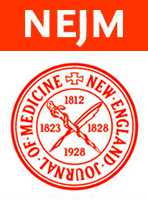NEJM:脐带血与间充质细胞体外共培养可改善脐带血移植结局
2012-12-28 NEJM 互联网 shumufeng
限制脐血移植临床应用的主要因素是其有核细胞数量太低。美国德克萨斯州立大学de Lima博士等研究者假设通过间充质细胞与脐带血体外共培养移植或可改善移植应用,他们的研究发现,间充质基质细胞与脐带血细胞共培养移植或是安全有效的。与仅接受未处理脐带血移植相比,扩增脐带血与未处理脐带血共移植可显着性改善移植结局。论文发表于国际权威杂志NEJM 2012年12月19日在线版。 研究者对31例接受2个单位脐
限制脐血移植临床应用的主要因素是其有核细胞数量太低。美国德克萨斯州立大学de Lima博士等研究者假设通过间充质细胞与脐带血体外共培养移植或可改善移植应用,他们的研究发现,间充质基质细胞与脐带血细胞共培养移植或是安全有效的。与仅接受未处理脐带血移植相比,扩增脐带血与未处理脐带血共移植可显着性改善移植结局。论文发表于国际权威杂志NEJM 2012年12月19日在线版。
研究者对31例接受2个单位脐带血移植的成年血液学癌症患者的移植结果进行了探究,其中一个移植单位包括经由异体间充质基质细胞体外共培养扩增的脐带血。研究人员将上述患者的移植结果与80例接受2个单位未处理脐带血移植的历史对照病例进行比较研究。
结果显示,间充质基质细胞共培养导致了总有核细胞和CD34+细胞的增殖(中位因子分别为12.2和30.1)。研究人员观察到,接受1单位扩增脐带血和1单位未处理脐带血移植的患者,获得的总有核细胞量和CD34+数量分别为8.34×107每千克体重和1.81×106每千克体重—均高于接受2单位未处理脐带血移植的历史病例的效果。对于移植物受者而言,增殖脐带血移植受者至中性白细胞植入的中位时间为15天,与之相比,仅接受未处理脐带血移植的患者为24天(P<0.001);至血小板植入的中位时间分别为42天和49天(P=0.03)。在第26天,体外扩增培养后中性白细胞植入的累积发生率为88%,与之相比,未扩增的累积植入率则为53% (P<0.001);在第60天时,两组血小板植入的累积发生率分别为71%和31%(P<0.001)。
研究人员由此得出结论,间充质基质细胞与脐带血细胞共培养移植或是安全有效的。与仅接受未处理脐带血移植相比,扩增脐带血与未处理脐带血共移植可显着性改善移植结局。

DOI: 10.1056/NEJMoa1207285
PMC:
PMID:
Cord-Blood Engraftment with Ex Vivo Mesenchymal-Cell Coculture
Marcos de Lima, M.D., Ian McNiece, Ph.D., Simon N. Robinson, Ph.D., Mark Munsell, M.S., Mary Eapen, M.D., Mary Horowitz, M.D., Amin Alousi, M.D., Rima Saliba, Ph.D., John D. McMannis, Ph.D., Indreshpal Kaur, Ph.D., Partow Kebriaei, M.D., Simrit Parmar, M.D., Uday Popat, M.D., Chitra Hosing, M.D., Richard Champlin, M.D., Catherine Bollard, M.D., Jeffrey J. Molldrem, M.D., Roy B. Jones, M.D., Ph.D., Yago Nieto, M.D., Ph.D., Borje S. Andersson, M.D., Nina Shah, M.D., Betul Oran, M.D., Laurence J.N. Cooper, M.D., Ph.D., Laura Worth, M.D., Muzaffar H. Qazilbash, M.D., Martin Korbling, M.D., Gabriela Rondon, M.D., Stefan Ciurea, M.D., Doyle Bosque, R.N., Ila Maewal, Pharm.D., Paul J. Simmons, Ph.D., and Elizabeth J. Shpall, M.D.
BACKGROUND Poor engraftment due to low cell doses restricts the usefulness of umbilical-cord-blood transplantation. We hypothesized that engraftment would be improved by transplanting cord blood that was expanded ex vivo with mesenchymal stromal cells. METHODS We studied engraftment results in 31 adults with hematologic cancers who received transplants of 2 cord-blood units, 1 of which contained cord blood that was expanded ex vivo in cocultures with allogeneic mesenchymal stromal cells. The results in these patients were compared with those in 80 historical controls who received 2 units of unmanipulated cord blood. RESULTS Coculture with mesenchymal stromal cells led to an expansion of total nucleated cells by a median factor of 12.2 and of CD34+ cells by a median factor of 30.1. With transplantation of 1 unit each of expanded and unmanipulated cord blood, patients received a median of 8.34×107 total nucleated cells per kilogram of body weight and 1.81×106 CD34+ cells per kilogram — doses higher than in our previous transplantations of 2 units of unmanipulated cord blood. In patients in whom engraftment occurred, the median time to neutrophil engraftment was 15 days in the recipients of expanded cord blood, as compared with 24 days in controls who received unmanipulated cord blood only (P<0.001); the median time to platelet engraftment was 42 days and 49 days, respectively (P=0.03). On day 26, the cumulative incidence of neutrophil engraftment was 88% with expansion versus 53% without expansion (P<0.001); on day 60, the cumulative incidence of platelet engraftment was 71% and 31%, respectively (P<0.001). CONCLUSIONS Transplantation of cord-blood cells expanded with mesenchymal stromal cells appeared to be safe and effective. Expanded cord blood in combination with unmanipulated cord blood significantly improved engraftment, as compared with unmanipulated cord blood only. (Funded by the National Cancer Institute and others; ClinicalTrials.gov number, NCT00498316.)
本网站所有内容来源注明为“梅斯医学”或“MedSci原创”的文字、图片和音视频资料,版权均属于梅斯医学所有。非经授权,任何媒体、网站或个人不得转载,授权转载时须注明来源为“梅斯医学”。其它来源的文章系转载文章,或“梅斯号”自媒体发布的文章,仅系出于传递更多信息之目的,本站仅负责审核内容合规,其内容不代表本站立场,本站不负责内容的准确性和版权。如果存在侵权、或不希望被转载的媒体或个人可与我们联系,我们将立即进行删除处理。
在此留言









#移植结局#
82
#脐带血#
77
#脐带血移植#
95
#脐带#
76